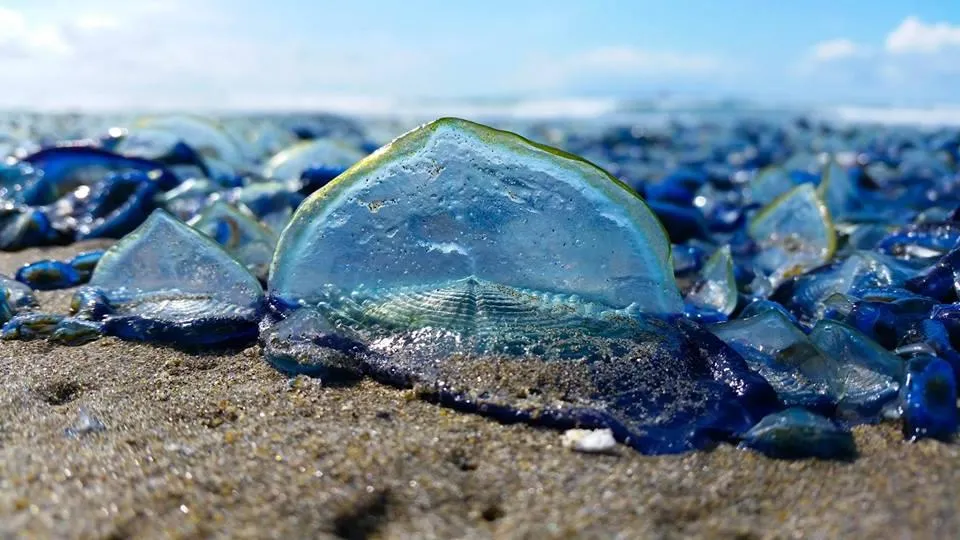Droves of Elegant Blue Jellies Wash Up on Pacific Shores
Unusually strong winds have pushed Velella velellas, or “by-the-wind sailors,” onto West Coast beaches by the thousands
/https://tf-cmsv2-smithsonianmag-media.s3.amazonaws.com/filer/2f/01/2f01a6fe-a9cf-4c84-a870-a1e2f546bd8c/11070260_1068015933208412_1582138485549400916_n.jpg)
From Washington to Oregon, there are currently beaches blanketed with strange, sapphire-blue creatures. These delicate beasts are Velella velellas—also known as “by-the-wind sailors”—who have been blown ashore by very strong westerly winds.
While commonly referred to as “jellies,” taxonomic sticklers know the Velella is just the jellyfish’s distant cousin. Really, “they are as different from jellyfish as mammals and birds would be among vertebrates,” marine biologist Jim Watanabe told the SF Gate when Velellas washed up in California last year. (While mass Velella beachings are difficult to predict, clumps of the animals are typically blown ashore every few years.)

In fact, each “creature” that we see is not just one animal, but many: similar to coral, the paper-thin, gelatinous sails host colonies of polyps underneath. Colonies of Velellas normally live in clumps on the surface of the open ocean, transported by the winds that blow against their sails, which stick out of the water. "They go where the wind goes," Watanabe said. Velellas have evolved their striking color for camouflage and protection from the sun.
The Monterey Bay Aquarium Research Institute (MBARI) takes a deeper look at what, exactly, a Velella is:
While Velella are beautiful to look at, they give off a strong fishy smell as they start to decay, The Oregonian reports. Like jellyfish, they do have the capacity to sting their prey, but humans typically do not feel the effect. (The strength of Velellas’ toxin is akin to that of an anemone.) Still, “Don’t touch them then touch your eyes,” marine educator Bill Hanshumaker advised The Oregonian.

